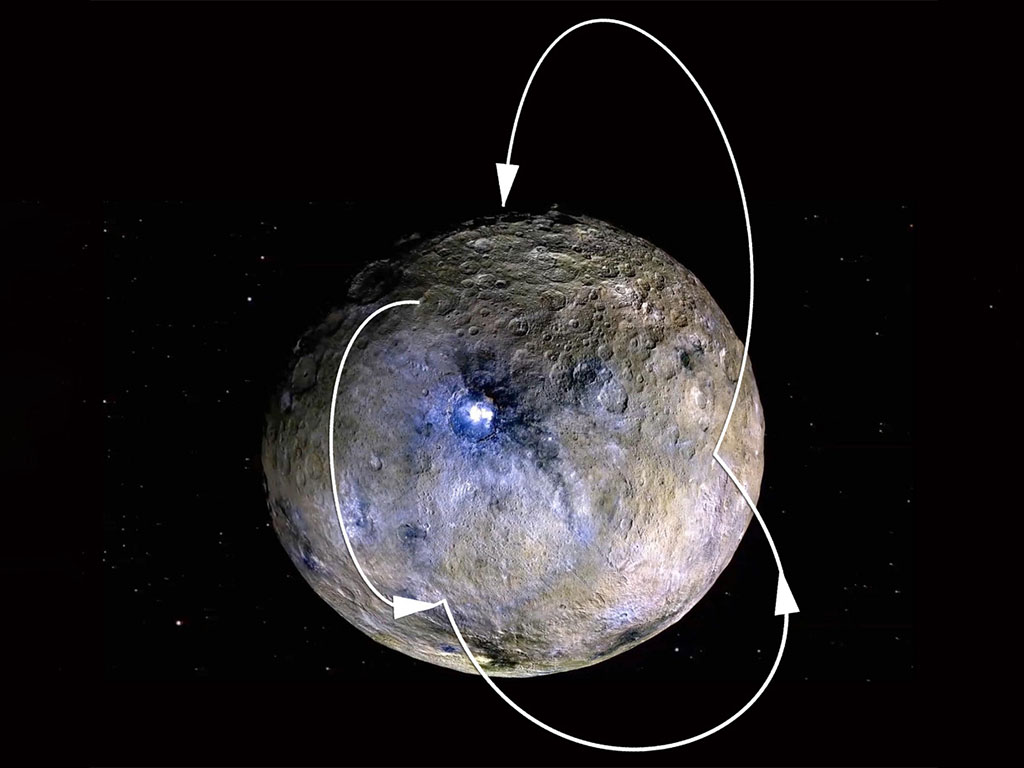This graphic shows a theoretical path of a water molecule on Ceres. Some water molecules fall into cold, dark craters called “cold traps,” where very little of the ice turns into vapor, even over the course of a billion years. (NASA/JPL-Caltech/UCLA/MPS/DLR/IDA)
Home This graphic shows a theoretical path of a water molecule on Ceres. Some water molecules fall into cold, dark craters called “cold traps,” where very little of the ice turns into vapor, even over the course of a billion years. (NASA/JPL-Caltech/UCLA/MPS/DLR/IDA) This graphic shows a theoretical path of a water molecule on Ceres. Some water molecules fall into cold, dark craters called "cold traps," where very little of the ice turns into vapor, even over the course of a billion years. (NASA/JPL-Caltech/UCLA/MPS/DLR/IDA)


